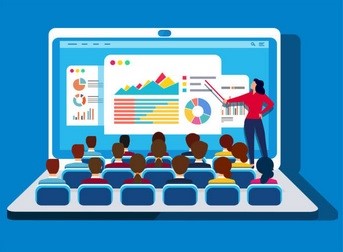Teaching demonstrations are an integral part of the interview process for academic jobs where teaching responsibilities are a part of the workload. Even if you are not on the job market, teaching demonstrations can be a helpful exercise in analyzing your instructional practices and identifying areas for improvement. Many four-year institutions require a teaching demonstration in addition to a research/job talk, while two-year or teaching-oriented institutions may only require a teaching demonstration (Gannon, 2019). However, the structure, format, and length of teaching demonstrations differ between four-year and two-year institutions. Furthermore, depending on the discipline, teaching demonstrations may or may not be required; but, the majority of institutions seem to require them. For example, in a survey of 113 biology faculty from a variety of institutions across North America, 62% of biology departments require a teaching demonstration (Smith et al, 2013). The rest of this article will explain what a teaching demonstration is and how to prepare for one.
What are Teaching Demonstrations?
 Often featured as a portion of a day-long interview, candidates are asked to synthesize their expertise with pedagogical know-how to teach unfamiliar students. The synthesis of content and pedagogical knowledge is the goal of a successful teaching demonstration. Job candidates should show that they are able to deliver a presentation that engages the audience in the learning process. Think of teaching demonstrations as a performative extension and embodiment of your statement of teaching philosophy, as well as the persona you demonstrate with your teaching portfolio. Put simply, job candidates are expected to show, not tell, how they teach. To help you design and structure your teaching demonstration, consider these points below:
Often featured as a portion of a day-long interview, candidates are asked to synthesize their expertise with pedagogical know-how to teach unfamiliar students. The synthesis of content and pedagogical knowledge is the goal of a successful teaching demonstration. Job candidates should show that they are able to deliver a presentation that engages the audience in the learning process. Think of teaching demonstrations as a performative extension and embodiment of your statement of teaching philosophy, as well as the persona you demonstrate with your teaching portfolio. Put simply, job candidates are expected to show, not tell, how they teach. To help you design and structure your teaching demonstration, consider these points below:


 Job candidates are recommended to research the target institution to best tailor job materials to that specific institution. The teaching demonstration is no different. Research the institution and the department, looking for a preference in teaching styles and for the makeup of the student body. If the institution/department features active learning, for example, a teaching demonstration that is lecture-heavy may not be well suited. Knowing the demographics of the student body can help shape your teaching practices. If an institution is featuring their diversity initiatives to promote increasing inclusion, you may ask how your teaching demonstration matches. Lastly, if a certain course is the audience of the teaching demonstration, job candidates can also research that specific course at the institution. Faculty who already teach that course may have uploaded lessons, activities, and course syllabi that can reveal standard departmental practices.
Job candidates are recommended to research the target institution to best tailor job materials to that specific institution. The teaching demonstration is no different. Research the institution and the department, looking for a preference in teaching styles and for the makeup of the student body. If the institution/department features active learning, for example, a teaching demonstration that is lecture-heavy may not be well suited. Knowing the demographics of the student body can help shape your teaching practices. If an institution is featuring their diversity initiatives to promote increasing inclusion, you may ask how your teaching demonstration matches. Lastly, if a certain course is the audience of the teaching demonstration, job candidates can also research that specific course at the institution. Faculty who already teach that course may have uploaded lessons, activities, and course syllabi that can reveal standard departmental practices. No matter your level of comfort in the classroom, practicing your teaching demonstration is a crucial step. Gannon (2019) suggests practicing until it's "almost muscle memory." Get feedback from a variety of individuals: colleagues, mentors, students, and your instructional consultants here at the CITL. We can help you with your teaching demonstration at any phase of your planning process and at any stage of your professional career. Practice and keep practicing your entire teaching demonstration, activities and timing with peers and our instructional consultants.
No matter your level of comfort in the classroom, practicing your teaching demonstration is a crucial step. Gannon (2019) suggests practicing until it's "almost muscle memory." Get feedback from a variety of individuals: colleagues, mentors, students, and your instructional consultants here at the CITL. We can help you with your teaching demonstration at any phase of your planning process and at any stage of your professional career. Practice and keep practicing your entire teaching demonstration, activities and timing with peers and our instructional consultants.